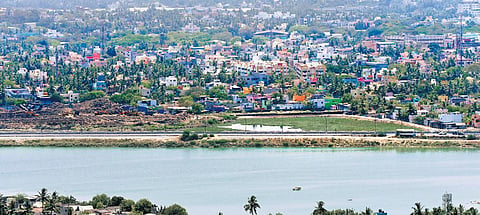

CHENNAI: With land becoming a scarce commodity for development projects in the State, the government is now exploring the option of developing satellite towns and urban growth centres. According to Housing Department officials, the State is planning to identify growth centres and synergise activities of all departments, while looking for partnership with the private sector. This could also lead to creation of integrated townships in the city’s peripheries.
The real estate sector’s focus is now on the new Integrated Township Policy, which is being framed to promote and regulate development of townships both by public and private sectors. “This will decongest large cities in the State. We need to see how it will get implemented,” says S Sridharan, chairman, Urban Development/ Affordable Housing Committee, Confederation of Real Estate Developers’ Associations of India (CREDAI).
Integrated townships are massive real estate projects that have both residential and commercial complexes, and all associated infrastructure like roads, schools, colleges, hospitals, shopping centres, water treatment plants, drainage and sewage facilities, places of worship, etc, that come together to form a miniature urban ecosystem. In fact, such projects are not new to the city.
Padam Dugar, president of CREDAI says the idea of integrated township was born 10 years ago. “This could not be implemented then but the government’s decision to implement it now could change the entire real estate scenario,” he says.
Interestingly, the private sector player did build such townships but it was never fully integrated due to lack of government support. “If the government supports such projects, it will result in development of infrastructure, creation of better amenities and connectivity besides decongesting the city,” says Dugar.
Land has never been actually scarce, it is the connectivity that matters, he adds. The Outer Ring Road project has unlocked a huge parcel of land, says Dugar. The mushrooming of integrated townships at the periphery would also bring down land prices in the city. Srinivas Anikipatti, senior director - Tamil Nadu and Kerala, Knight Frank India concurs. “The move will greatly benefit developers in attaining title clean land parcels and also help in regulating land prices,” he adds.
“Integrated townships are usually geared towards self-sustenance, that is at the cusp of infrastructure and social activities. A well-planned integrated township will include all features and amenities, along with planned exigencies to truly be self-reliant,” he says.
A Shankar, Chief Operating Officer, Strategic Consulting, Jones Lang LaSalle (JLL) says integrated township should be implemented in a more decentralised manner covering major cities in Tamil Nadu. “Floor Space Index (FSI) incentives should be provided to make the township successful. Rental housing with alternative and innovative construction technologies should be encouraged,” he says.
“These townships need to come up in multiple locations in cities with close proximity to industrial areas, employment hubs and access to better infrastructure with affordable land price. There is a need to create special residential zones to attract investments to make it a more viable proposition,” he says.
Meanwhile, it is learnt that an integrated township project was proposed by consultant CBRE appointed by the State government in the 20-30 acres near Vandalur to Mudichur stretch along the Outer Ring Road. However, it has yet to receive government approval.